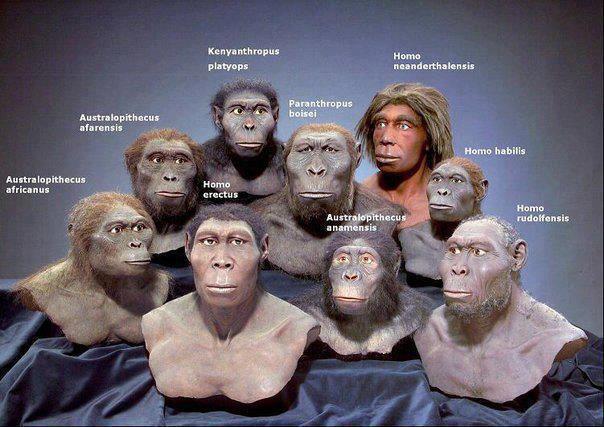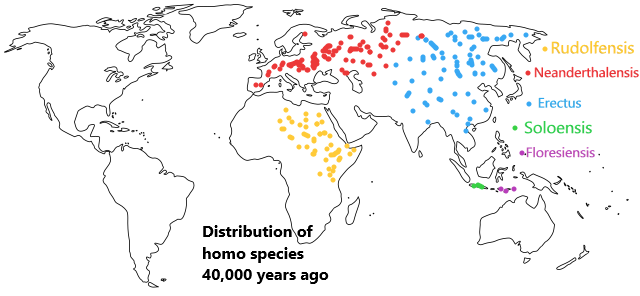
We = Homo Sapiens.
You are probably reading this article from your phone or computer, but all these are recent. Long ago, we were in the wild like insects and snakes. Our species has undergone significant development to reach this stage. Species being defined as a group of animals capable of breeding to produce fertile off-springs. In this manner, we understand why donkeys and horses are two different species while rottweilers and a chihuahuas, although physically more dissimilar, are the same species.
First things first, what is the meaning of "Homo sapiens"? Homo means "man" and sapiens "wise". A quick detour to biology will let us know that scientific names have two parts: the genus and species in that order. Genus can be interpreted as family of species. Since 10,000 years ago, we have been and we are the single living species of our genus (Homo). What, there were others? What happened?
3.5 billion years ago, matter aggregated to form our planet. With some "luck", chemicals jumbled together to form DNA to later produce the first organisms of our planet. They evolved into different species, and until 6 million years ago, human beings and chimpanzees were no different. The first Homo species (let's say humans) are found to have appeared first in the hikes of East Africa. These early humans moved to different parts of the world—with different environmental conditions—hence, evolution lead those to different directions.
In Europe and Western Asia, they evolved into Homo neanderthalensis, commonly called Neanderthals. They were musclier and bulkier than we homo sapiens.
In Eastern Asia, they evolved into Homo erectus (Upright man).
On the island of Java in Indonesia, they became Homo soloensis. Meaning man from Solo valley. Particularly suited for life in the tropics.
On the island of Flores, they evolved into the shortest human species (Homo florensiensis). They had a maximum height of 1m and weighed 25 kilograms on average. This is because they entered into the island when the sea level was low, but sea level went high with time; hence, restricting them from motion and good quality food.
In Africa, evolution led to a plethora of species ranging from Homo rudolfensis (Man from lake Rudolf) to Homo ergaster(working man), passing through the most distinguished Homo sapiens(the wise man).

Contrary to most beliefs, all these species of humans lived in the same era, at least before their extinction. We don't know exactly when Homo sapiens came to be, but they simultaneously occupied the planet with the other species for a while. Some theories posit that Homo sapiens replaced the other human species when they encountered them, while others suggest that the species merged.
Analysis of our genes showed only traces of other species. For example, most humans have at least 1% Neanderthals genes in them. So we can fairly claim that the theory of replacement is correct. Did we kill the others? Probably. Tolerance is not a trademark of Sapiens. We have had wars just because of skin-colour, what about significantly different humans?
Thanks to our unique language, we invaded their lands and our encounters with them were lethal. We decimated all species of organisms similar to us. As Yuval Harari puts it, "too familiar to ignore, but too different to tolerate."
Read Sapiens: A Brief History of Humankind by Yuval Noah Harari for more details.